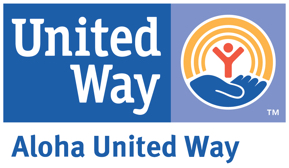Honolulu Star-Advertiser
More Families at Risk of Homelessness than Expected
December 10, 2016
Print/Online
Since April far more households than imagined — 792 — were at risk of becoming homeless in the islands. But it took only a one-time payment of $1,046, on average, to keep them from ending up on the streets. The sheer number of families at risk of becoming homeless surprised officials at Aloha United Way, who have been tasked by the state Legislature to distribute $4.7 million in state money across the islands to get homeless people housed and, just as important, keep families in their homes through one-time rental subsidies.
The original goal in early 2016 was to evenly distribute the money between the homeless and those at risk of becoming homeless as Hawaii struggled with the highest per capita rate of homelessness in the country. But most homeless people applying for the state aid through AUW do not have enough steady income to ensure they can continue paying for their rental units once the one-time subsidy runs out. So 73 percent of the money continues to go to families at risk of becoming homeless to keep them housed.
“We had no idea how big that population was,” said Cindy Adams, AUW’s president and CEO. “A lot of people are one paycheck away from becoming homeless. It’s a reflection of the cost of living in Hawaii.” Nine months of data since AUW began distributing the state money through 20 agencies has blown up many of the original assumptions about who would be helped.
The original goal was to give money to 2,900 individuals who were homeless or at risk of becoming homeless. But as of Friday 3,410 people had received aid. And while more people were helped than had been originally expected, AUW still has $1.9 million left to distribute because each family, on average, needed only $1,046 to stay housed.
“That was enlightening,” Adams said. “We’re learning a lot.”
There were other encouraging signs. Some 92 percent of the 289 homeless households that received financial assistance were still housed after six months, as were 84 percent of homeless individuals. For the bigger group of 792 households at risk of becoming homeless, 83 percent were still housed after six months, along with 88 percent of individuals who were at risk of becoming homeless.
“That was great to see,” Adams said.
Scott Morishige, the state’s homeless coordinator, said AUW’s data is encouraging and is the result of quickly moving state money out through agencies and into the hands of landlords to get — or keep — people housed. The state might use the AUW model of a “master contractor to effectively get money out” for similar homeless-related projects, Morishige said.
As part of its contract with the state to distribute the $4.7 million, AUW improved its 211 phone system to better identify and help homeless people — or those at risk of becoming homeless — and the system could likely benefit from additional staffing, Morishige said.
“It’s possible that 211 could be at the center of our homeless system,” he said. A 52-year-old woman from Chuuk who wanted to be identified only by her first name, Patricia, or her nickname, Peggy, did not know where to turn for help in late September when her brother-in-law/landlord moved to the mainland and left her and her family with no place to live. Patricia has four children ages 12 to 21; a stepdaughter, age 20; and a husband who drives for a tour bus company for $10 an hour.
After a week living in a Waikiki hotel, Patricia said, “We exhausted our finances.” While relatives took care of her birth children, Patricia, her husband and stepdaughter lived in their Toyota Sienna van for three nights in early October in the parking lot of a Salt Lake church.
“I was scared,” Patricia said. “I had never experienced that kind of life.” Desperate, Patricia drove around in search of help and pulled into a church on Nimitz Highway. “I was just driving and praying. … I was scared,” she said. “I never experienced that kind of life. I was worried it would get worse.”
The church referred Patricia to the Salvation Army, which connected her to AUW, which provided $4,300 in one-time help for first month’s rent and a security deposit on a three-bedroom apartment in Waianae. When she got the keys to her new apartment, “I cried,” Patricia said, tearing up at the memory. “I was very emotional.” The two oldest children now have jobs and contribute to the rent, and Patricia is looking for full-time employment as an office worker. In the meantime she volunteered as a Salvation Army bell ringer Friday as a way to give back.
She called the state money that she received through AUW and the Salvation Army “a blessing” and “very encouraging to people who need help.” Salvation Army Maj. Mark Gilden called the state money “a fantastic return on investment.” “It’s one of the more streamlined government grant processes I’ve seen,” Gilden said. “It’s common-sense stuff, not tons and tons of bureaucracy.” Salvation Army caseworkers will continue to work with families such as Patricia’s even after they’re housed to make sure they’re doing all right, Gilden said.
In the meantime he hopes more people like Patricia receive state assistance through AUW to keep them housed. With relatively little money, the state, AUW and their partner social service agencies have shown that “just a little bit of help now can prevent a huge mess later,” Gilden said.
Click on link to read the online article version. http://www.staradvertiser.com/2016/12/10/hawaii-news/more-families-at-ri...
